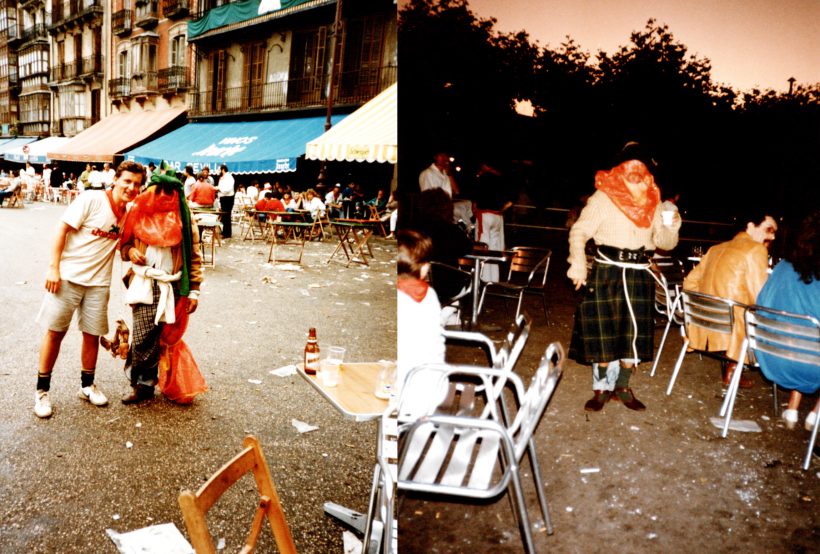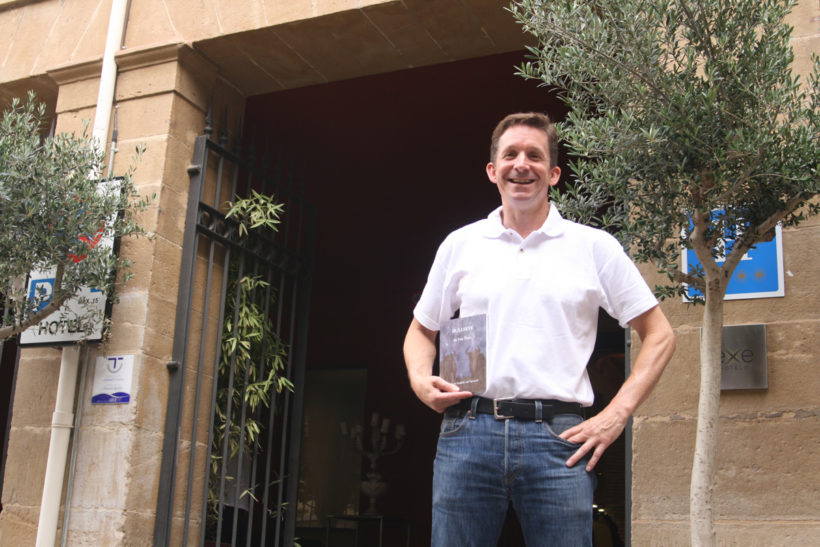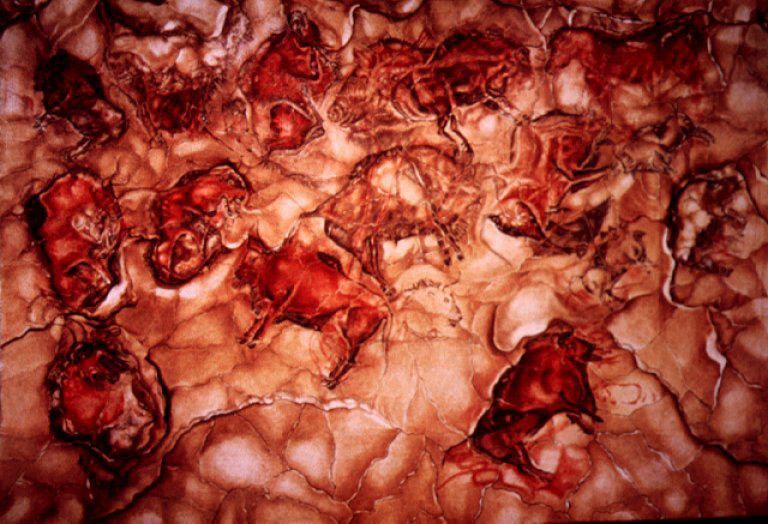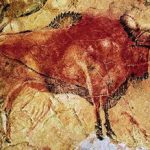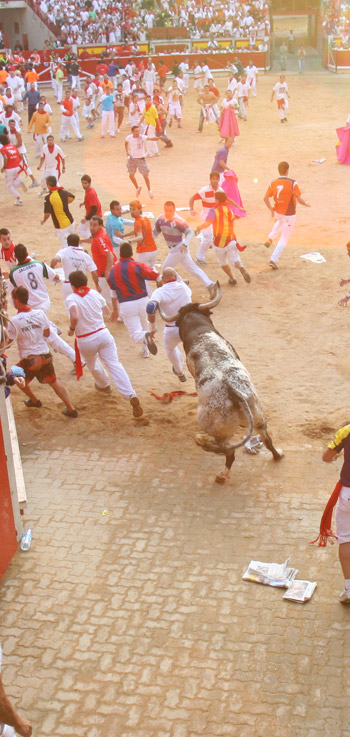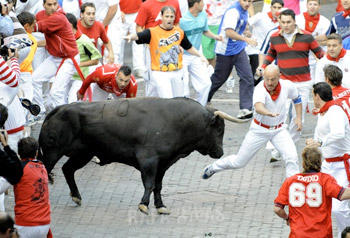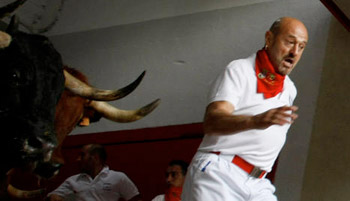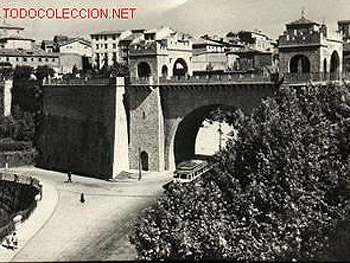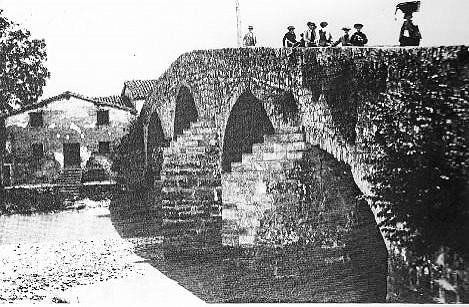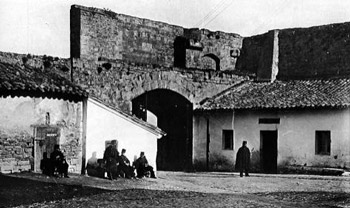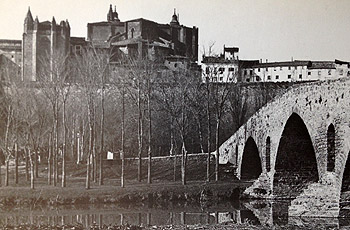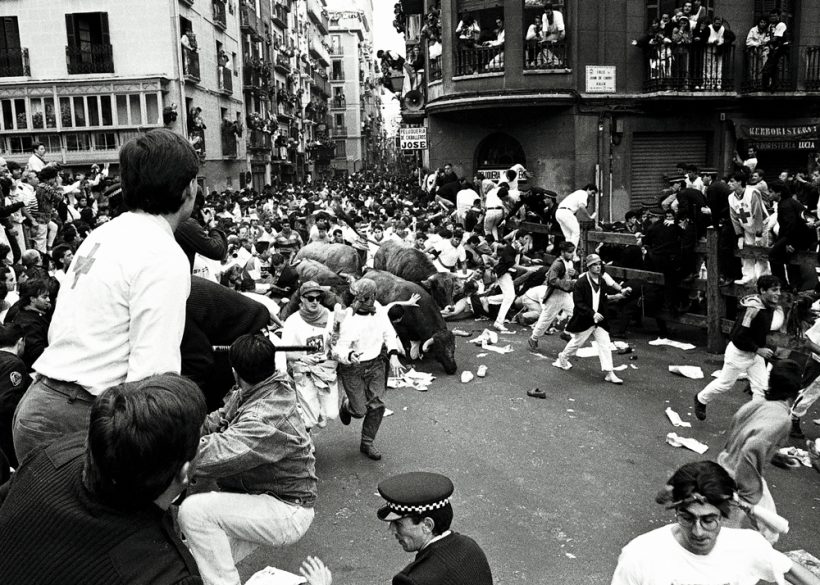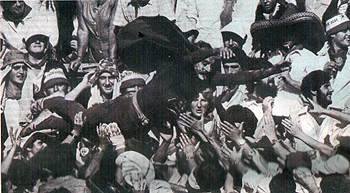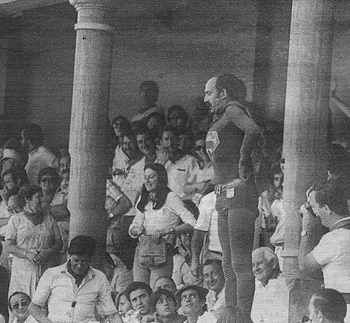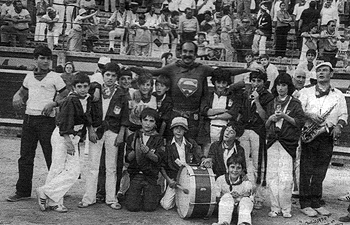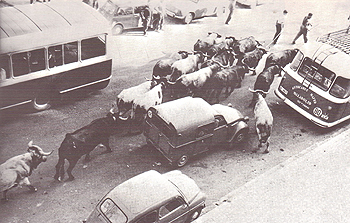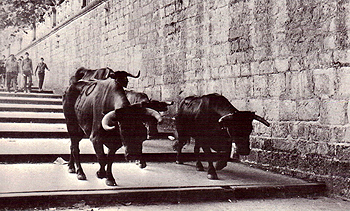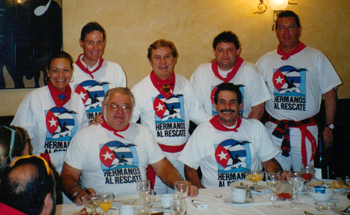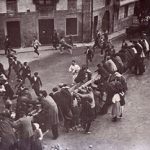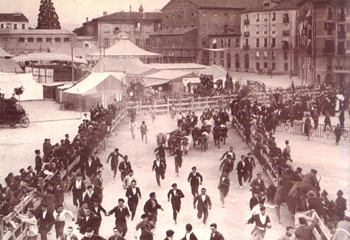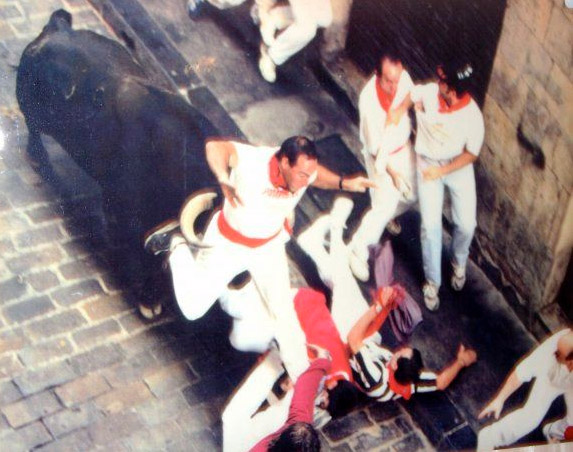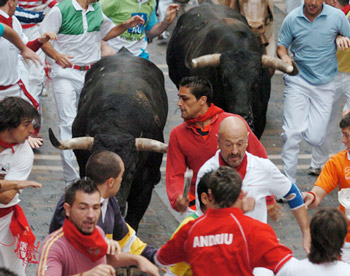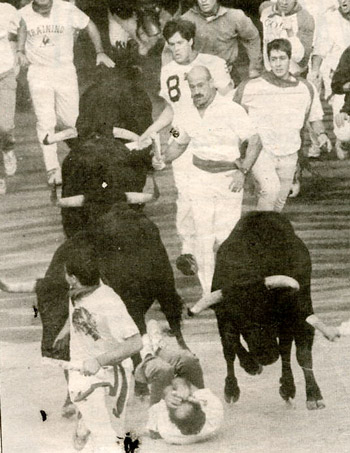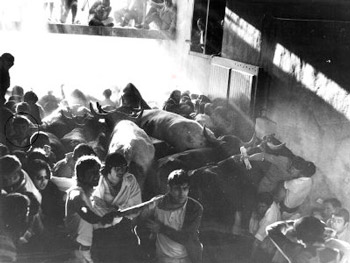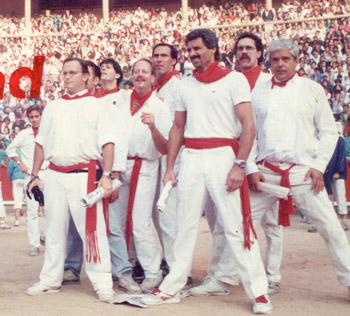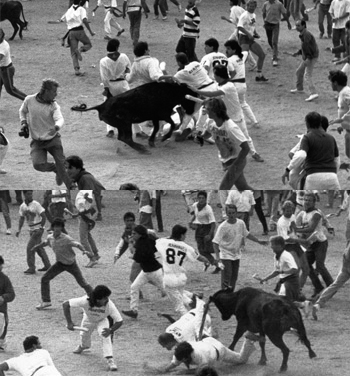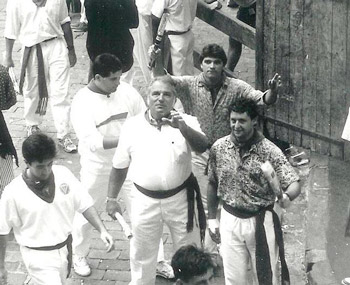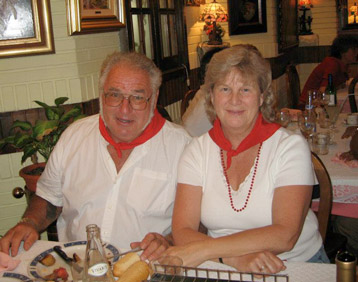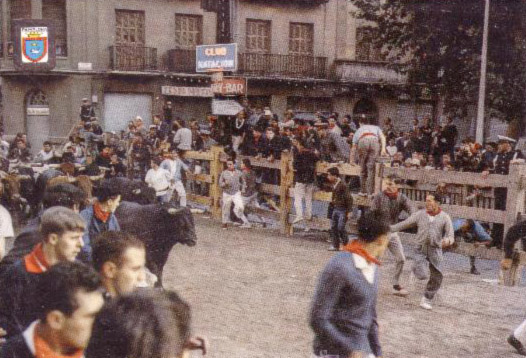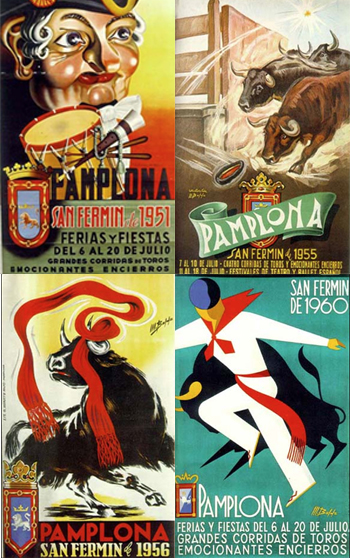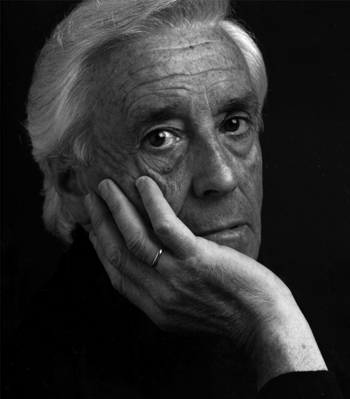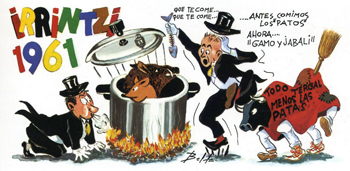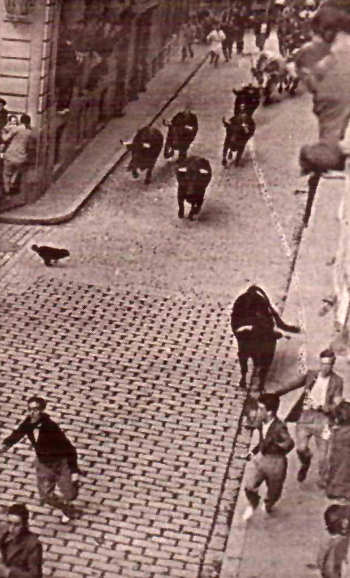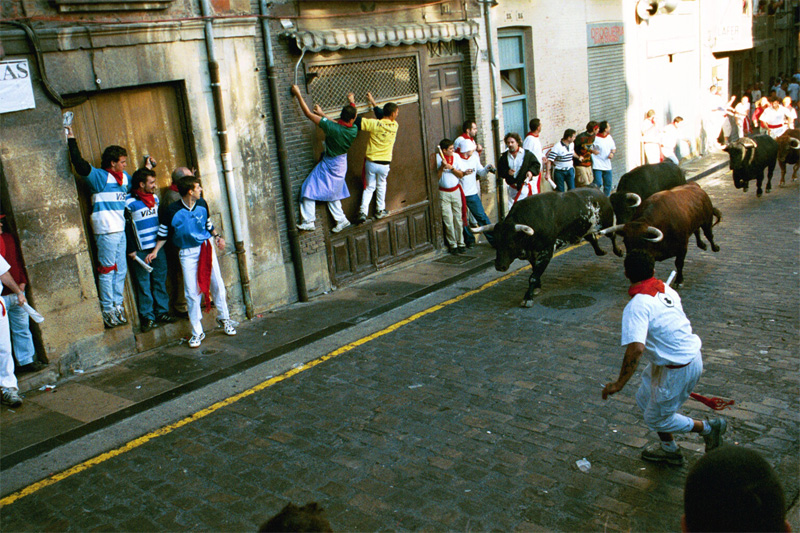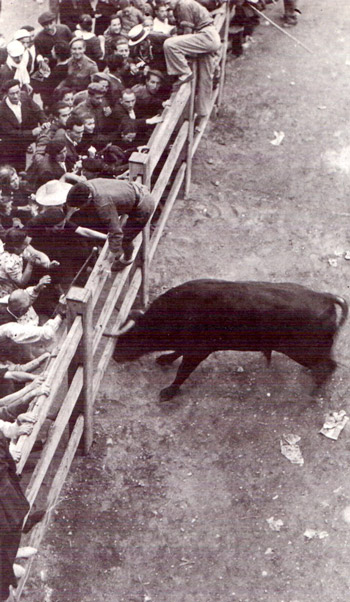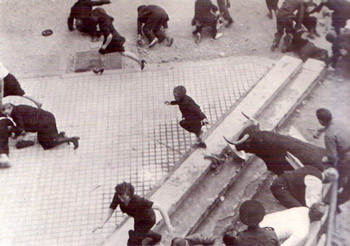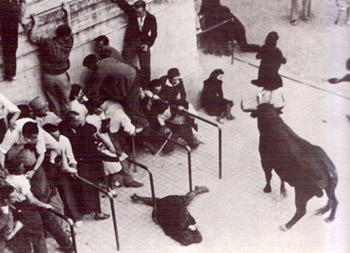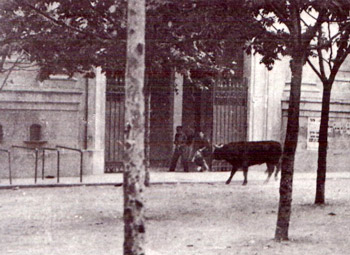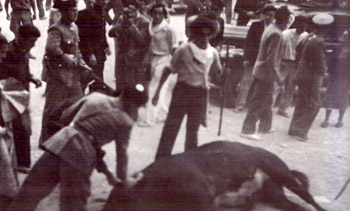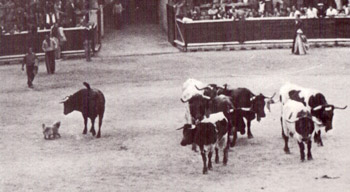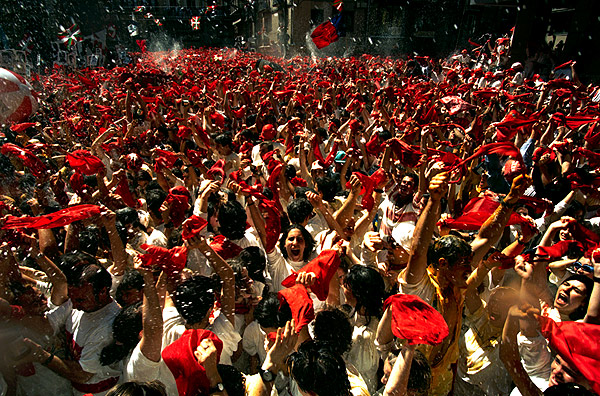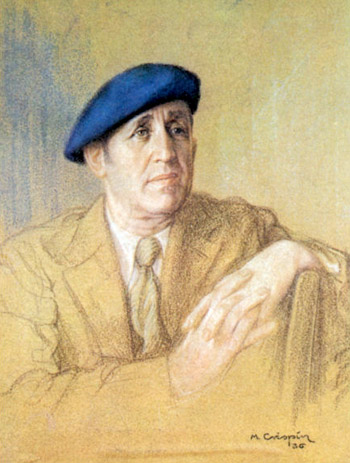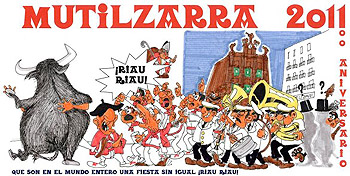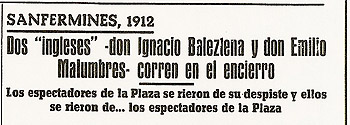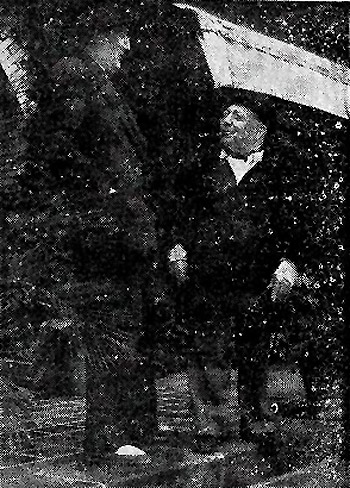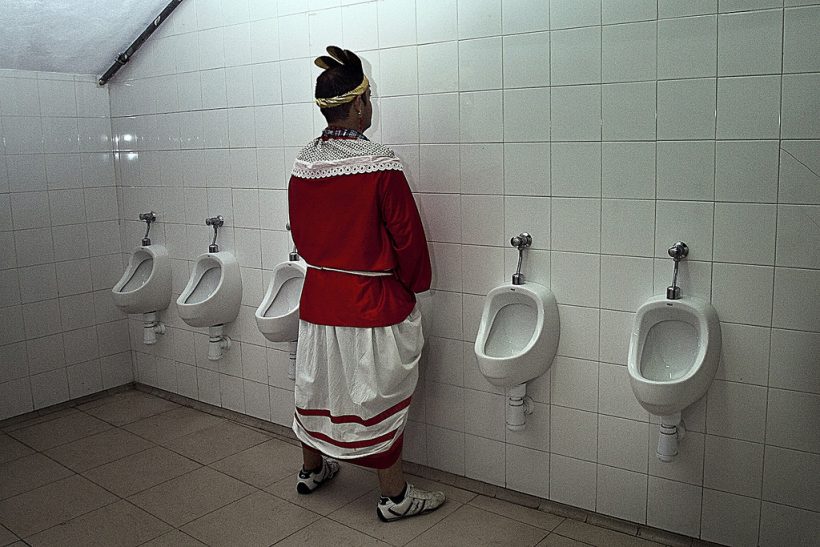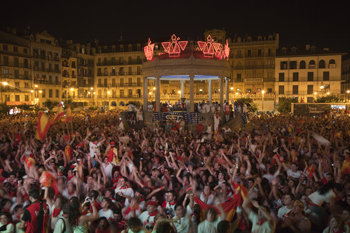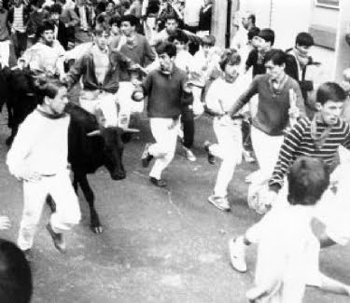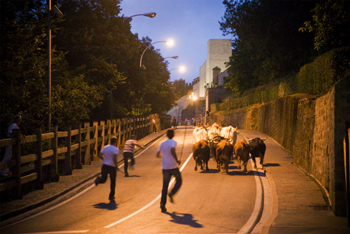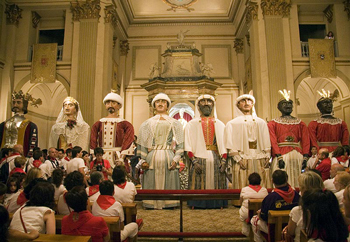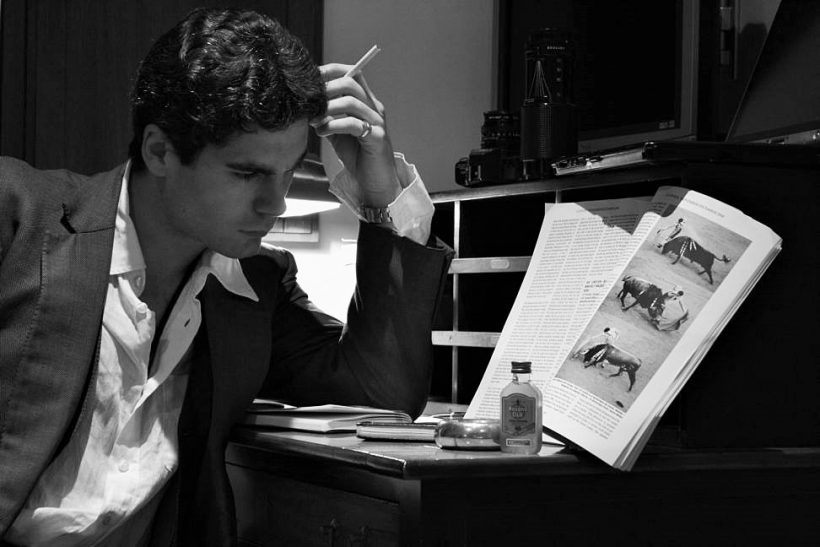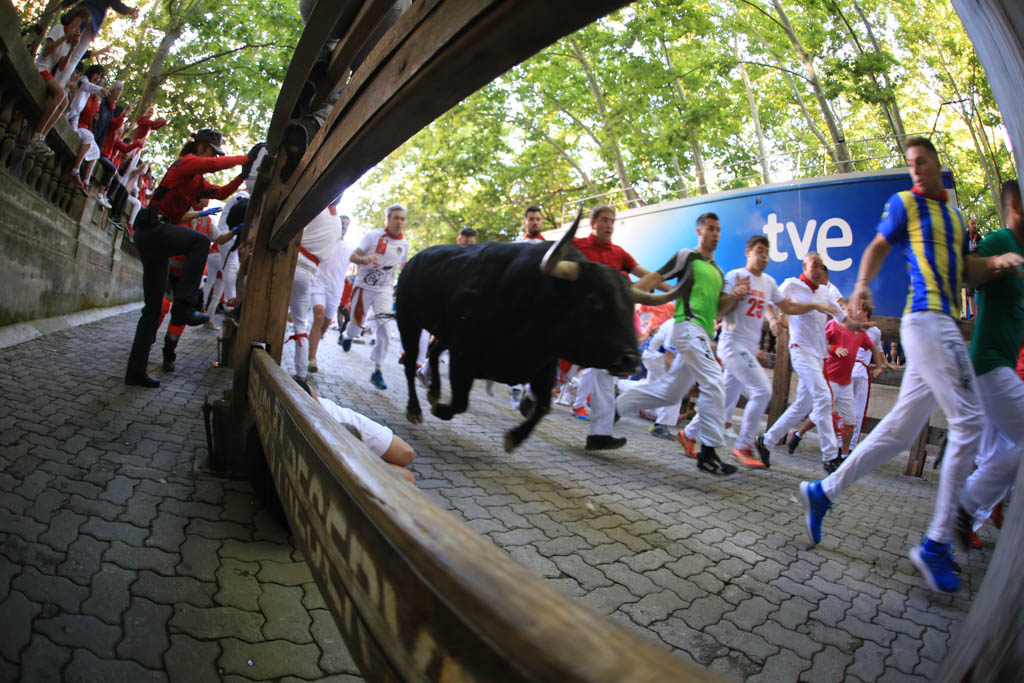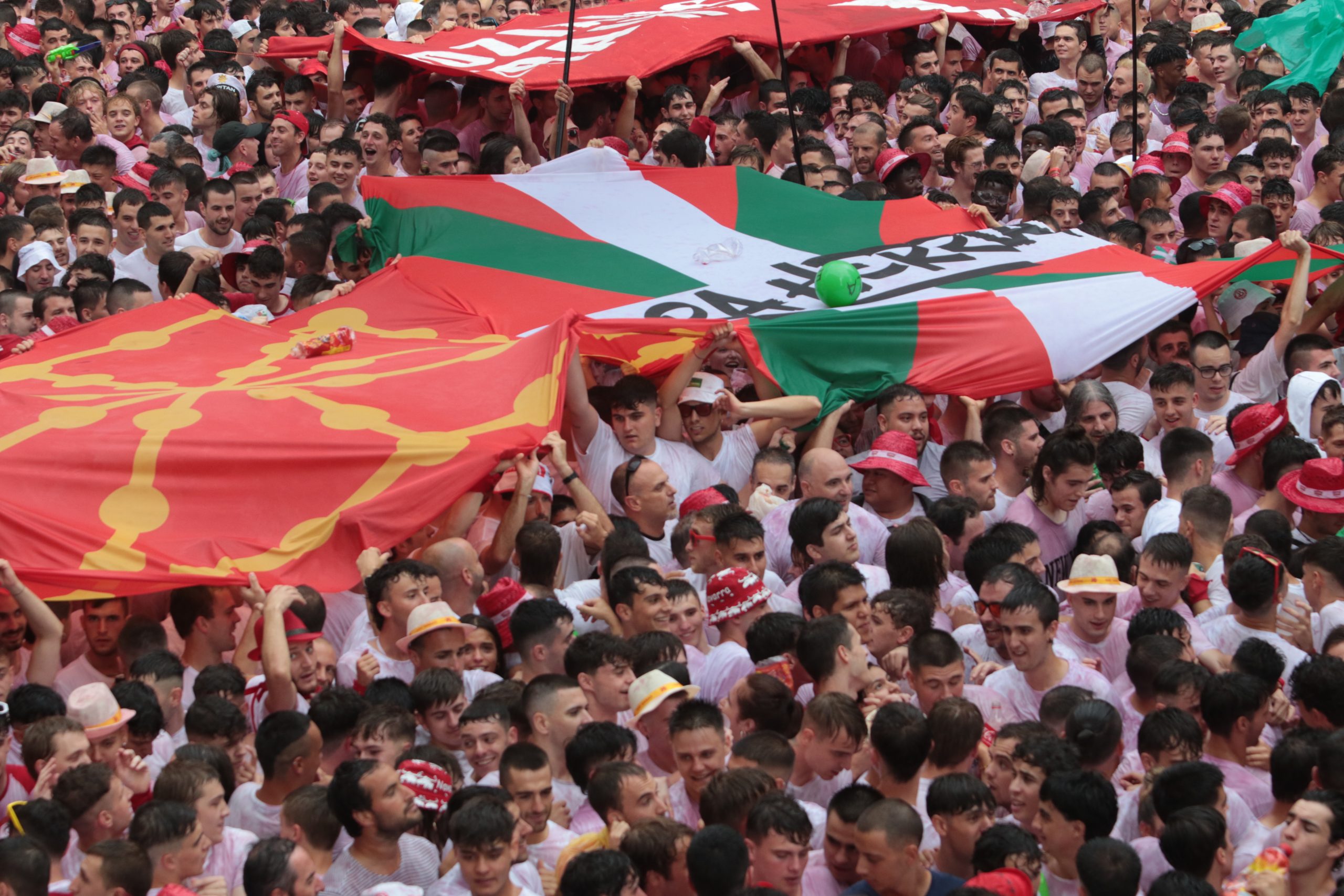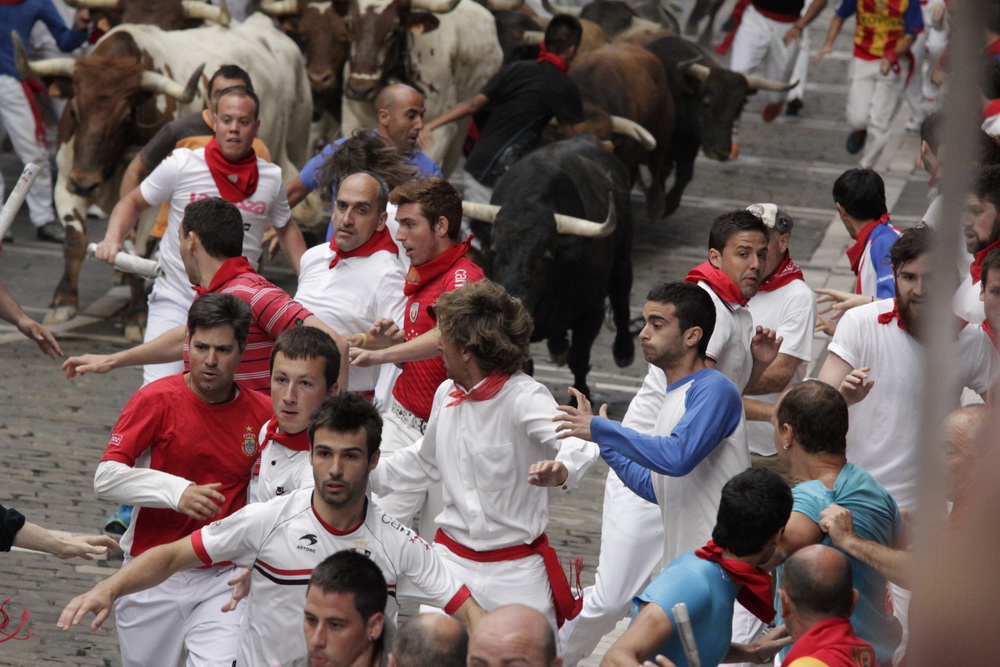It hardly seems real that it was only 2 months ago and fiesta hadn’t even started yet, and we all had the whole thing ahead of us to look forward to…and it hardly seems fair that it’s all over now, and we all have ahead of us 10 months of waiting.
But there is usually a little luz at the end of the callejon, and one can always look back and remember with a smile some of the events of those mad times in a crazy town called Pamplona . To paraphrase a saying, “If Pamplona didn’t exist, they’d have to invent it.” But it does exist, and they didn’t have to invent anything, but just let a town and its inhabitants develop a religious festival into something extraordinary.
And if someone tried to create anything similar now, why, we all know that “health and safety”, (yup, it does exist in Spain , but I think it goes under the name of “animals and alcohol”), would be down on the organisers like a ton of bull. Shit.
But going back to 2 months ago, every one of us who has been before knew that we were returning to the high life again. Not just the highs of the encierro, but of everything else that happens during the 204 hours of the Fiesta of San Fermin. Because everything just seems magnified there…the highs are higher, the laughs are greater, the girls are prettier, the hangovers more spectacular, I get uglier…even the lows are better! And if you’d never been before but are now hooked and can’t wait for next July to come around…believe me, the next 10 months will be the longest months of waiting you’ll ever have.
So now that the Kids of Kuku have un-strapped me from my strait jacket and asked me to write for them again, I’m going to have a little meander down the high road that is memory lane, fiesta-style.
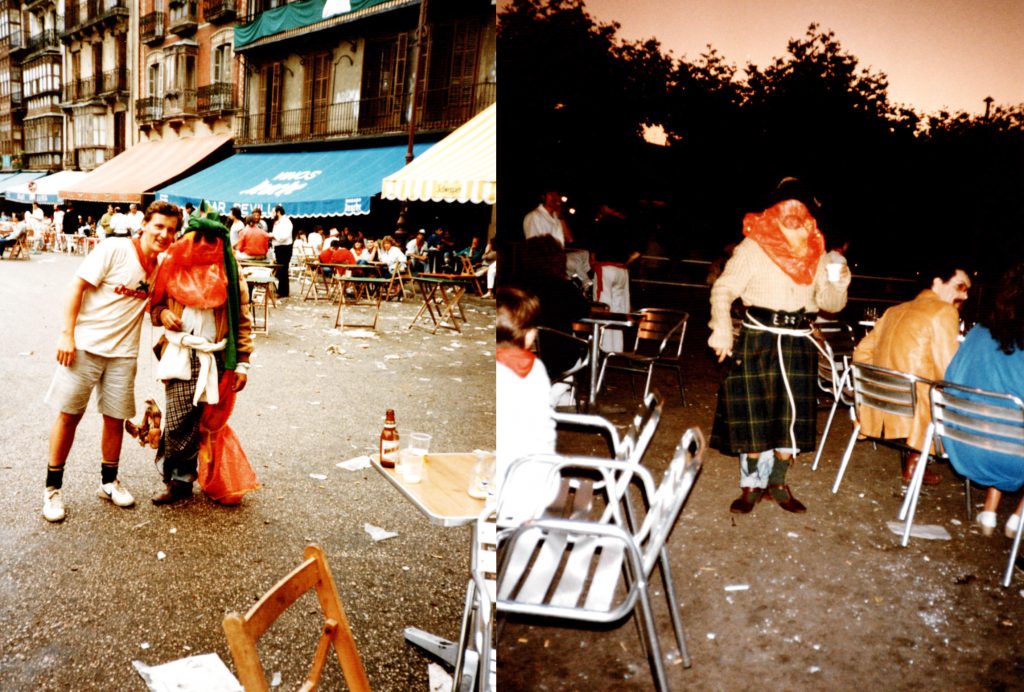
To start with, a bit of fun. Doing the rounds the last few months on a couple of fiesta websites there has been a bit of chatter about the fella above. I first came across him in 1986 as my friends and I were sitting in the gutter in the plaza, and we pretty much instantly called him the King of the Gypsies. I’ve since found out that other groups had other names for him, such as the Garlic King or the Onion Man, (and right now, just as we go to “press”, I’ve seen a couple of pictures drawn of him in 1988, with the title “El Conde de la Basura” – the Count of Rubbish, or perhaps, the Earl of the Rubbish Bin!), but whatever nickname he was given, his party trick was as smooth as it was simple: he’d just show up wearing whatever he happened to find lying around at any given moment, and sit down beside a group of foreigners.
Sometimes he would add to his attire at the same time as someone else was discarding theirs, so bit by bit he would be wearing more and more. One day during one of our rare forays over to the terrace at Bar Txoko, (well, although we were skint it was post encierro time and a cognac and vanilla or three were certainly deserved), he sat down at our table, leant over to me and whispered in my ear, “excuse me please, a patxaran for me.” To my great delight, he spoke a bit of English!
I found out his name was Francisco, and you’d see him throughout the day and into the night, dressed up looking like he’d just arrived from another planet sometimes, sitting with whatever group were buying him drinks at the time, getting gently sozzled. We used to joke that he was probably a bank manager, who for two weeks a year did exactly what he wanted. Or maybe he was San Fermin in disguise, just coming around to see everyone. I don’t remember seeing him in the 1990’s though…does anyone know anything?
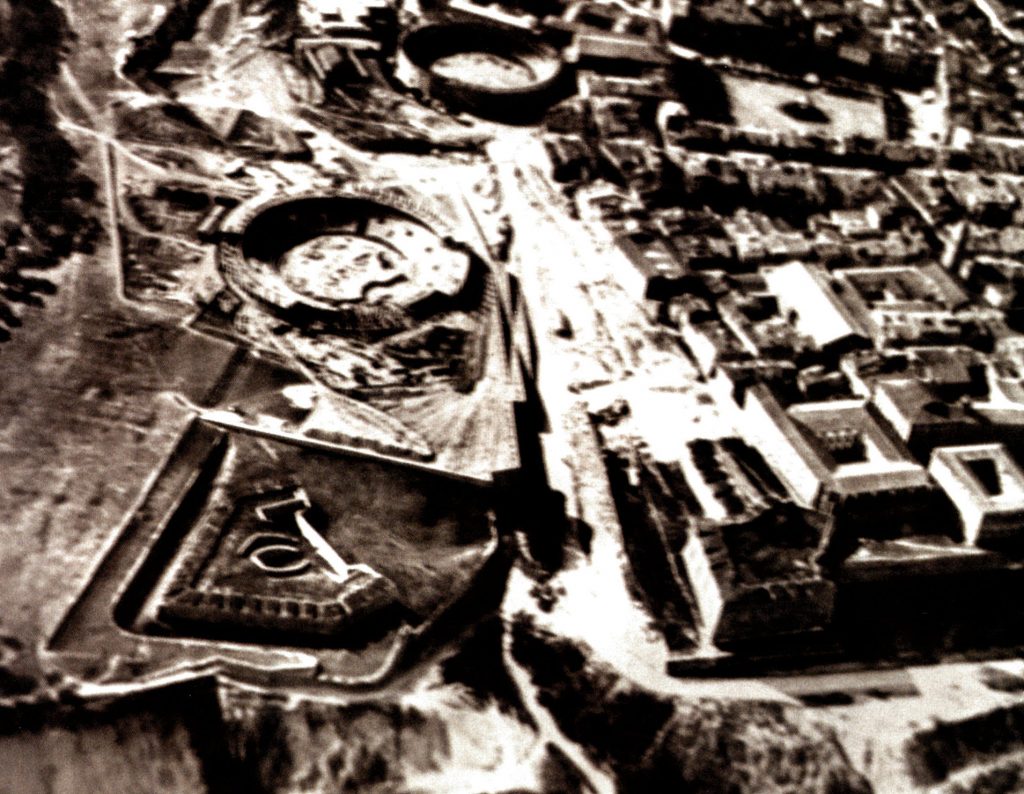
As mentioned a couple of months ago, the present bullring was 70 years old this year. Feliz cumpleaños, plaza de toros. Anyone who read the piece for May, “Stair Ways Day”, may remember the two photos of runs from 90 odd years ago, one where the run veered right as you exited Estafeta, heading toward the old ring, and the other veering left and into what became Telefonos and the run downhill and through the tunnel into the new ring.
In the picture above you can see the old ring at the top of the picture with the new one just below it, and to get your bearings as I know it’s not too clear, the Plaza de Castillo is to the right of the old ring, with a water fountain surrounded by trees in the centre, and so to the bottom of the square that long street is of course the Estafeta.
Well, the year the present ring opened also saw the first recorded human mountain in the new plaza, and it happened right at the entrance where the tunnel meets the sand. It also happened, of all days, on the day of its inauguration, July 7th. And amazingly there is a photograph of it, and though it is by no means the clearest photo ever taken, you can still see pretty well what’s going on.
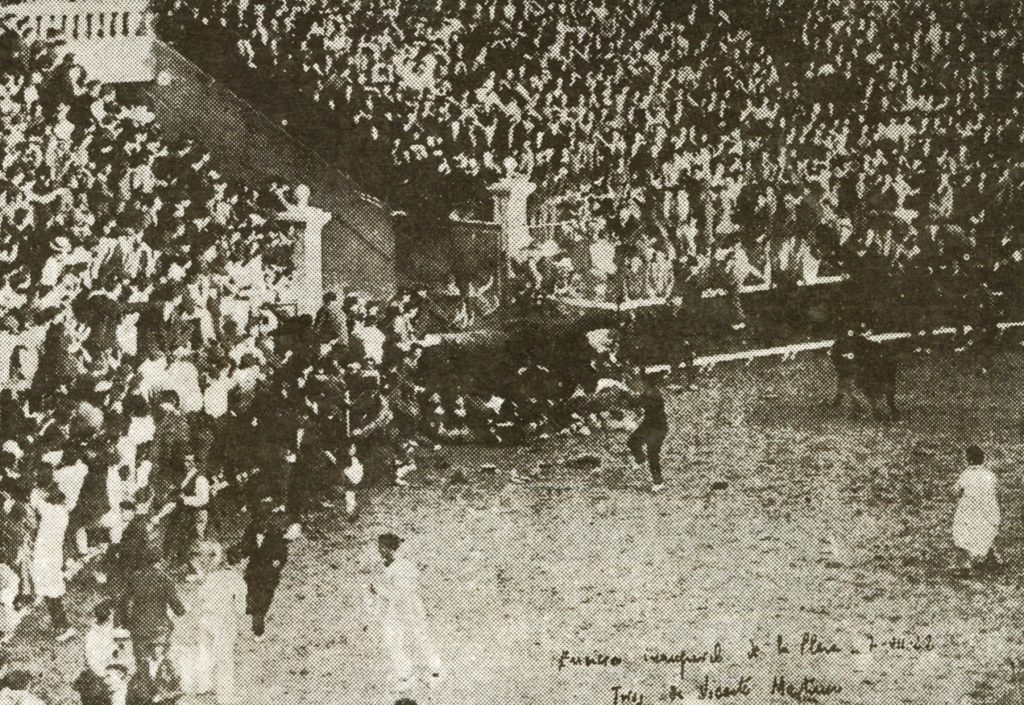
They were, literally, different times in those days, as at 6 a.m the rocket sounded and the bulls from the Herederos de Vicente Martinez ranch hit the streets and the first of that years encierros was underway. All went well it seems and some of the earlier runners had entered the ring without any trouble, but it only takes one to fall to bring down the rest…and that is what happened, until in no time there was a mountain of people blocking the tunnel and the herd were quickly upon them, but with no way through.
But they got through, alright, (with the encouragement of the herders!), but not before they had left over a hundred, yes a hundred, runners injured, to a greater or lesser degree. Amazingly, no one died that day, but it was a heck of a way to christen the new bull ring, and one that wasn’t forgotten for a long time.
High Life meets Night Life
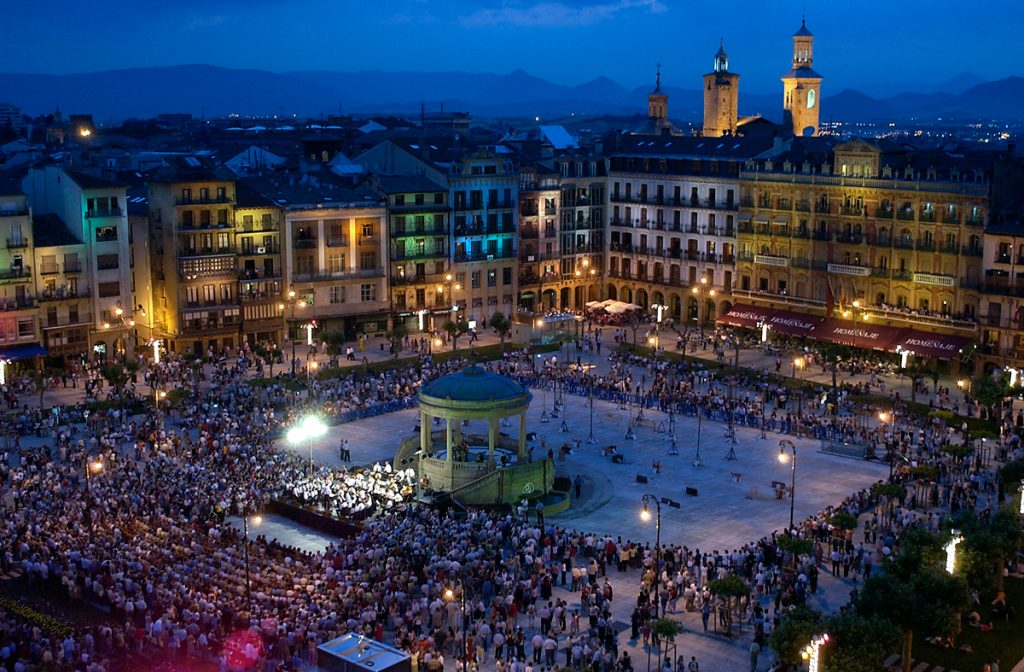
In the mornings, after the bull run, we’d be waiting for the little bulls to come out and play, and there would sometimes be a balloon or two floating above the ring. Not a child’s balloon, but a hot air balloon, and I’d wonder what it must be like, floating around up there serenely, while down here on the sand all was madness. I’ve never been on a balloon ride before, but it must be a great way to travel and see things, especially from such a different perspective. Like being in a plane, but closer, and quieter. It would be great to float around the city during fiesta in the daytime and see all those familiar places from a few hundred feet up, but what I’d really like to do is the same trip, but at night.
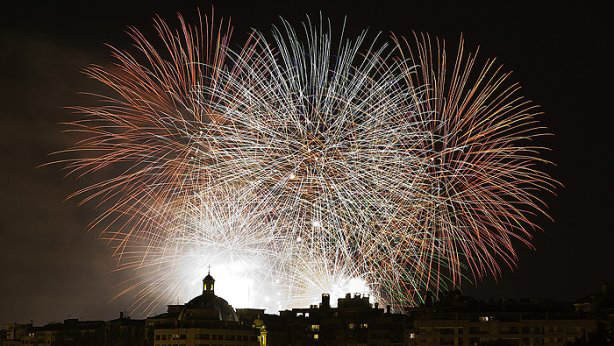
My Dad told me how as a child in London (and we’re going back to the mid-twenties and early thirties here), he used to dream that he could fly…yup, just jump out of the window, arms out-stretched…and fly over London at night. That’s how I’d like to do it over Pamplona , arms apart, and just glide and swoosh and smile my way over the city as it partied beneath me. Now that would be the high life!
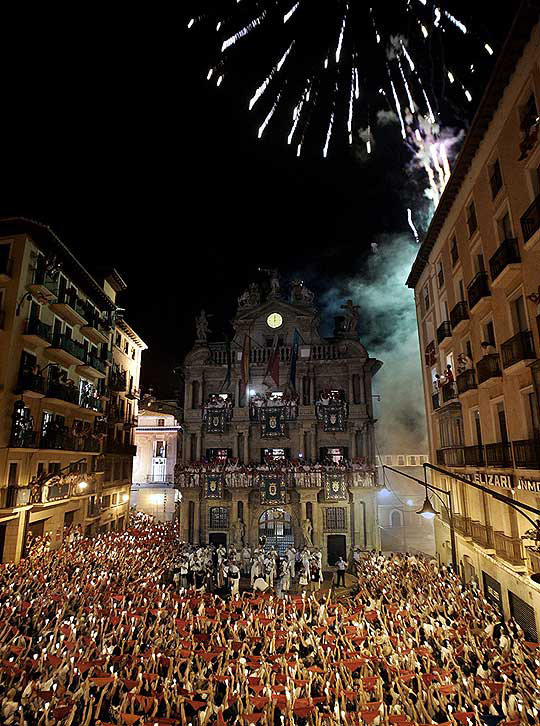
Now if some of those magnificent street sellers have some jet packs for sale next year, I might just by a couple, (if batteries are included). Even if it does say that they’re made in Senegal …
The Heavenly Peña
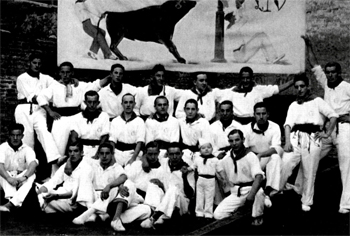
For anyone who has read some of these articles before (and thanks so much to those of you during San Fermin who took the time to say how much you liked what I’ve been writing – it was really appreciated), I love delving back into the past, (after all, with no past we wouldn’t have our present), as I often find a particular poignancy about certain old stories, especially if they are accompanied by an old black and white picture or two, or those evocative sepia stained ones…don’t you feel sometimes you’d like to be able to just step into them, and say, “hello…”
Well, if you’re wondering what this has to do with the high life, I don’t think you can get much higher than a heavenly peña…
In 1998 the Club Taurino de Pamplona, in a magazine issued to celebrate their 50th anniversary, had an article about a long since disappeared peña, La Veleta, “The Weathervane.” There are a couple of other meanings for that word, but I’m pretty sure that “weathervane” is a correct translation. Now, this lot were quite something, as they have a couple of “firsts” to their name, a couple of “somethings” that all peñas would eventually have that would change the whole “look” of fiesta forever.
One day I’d like to find out more about some of what I call the “pre-peñas”, too, those that existed before the arrival of those that we have now and know and love, but this lot were certainly amongst the first of the “modern type” peñas. As the article said, “they were the prototype of the modern peña, with their band and their fine style, and they were the admiration of everyone.”
For a club that only had a very short lifespan, their influence was huge in one regard thanks to one original member, and it’s down to him that fiesta in Pamplona, and many other places, has one particular flavour, that “look.”
I didn’t know too much more about them except that after the Civil War they ceased to be – see what I mean about some things being poignant? – but then as luck would have it, in the July 1st Diario de Navarra fiesta supplement this year, there was an article on them.
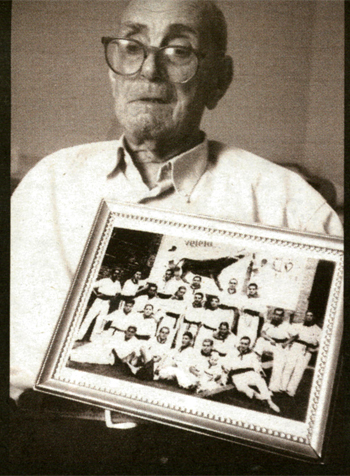
But it’s back to the past again for the moment. The club was formed in 1929 by a group of friends, and in those days the peñas dressed up in normal, dark clothes, all be it perhaps with a blue or black “blusa”, the jacket. Then in 1931 Juan Marquina Gonzalez (above), one of the originals of La Veleta decided the peña should adopt a uniform of red and white, arguing that when the clothes got dirty, all you had to do was dump them in bleach and they would be clean again. Well, his argument won the day and a legend was born. They were the first peña to do this.
So they’d hit the streets dressed uniformly in a style that is now denominated “Pamplonica” and is famous all over the planet: the white trousers and shirt with the red sash and pañuelo, something that up until then only the gaitero and txistulari piper groups would wear.
Another is that their club song, or as they would call it, the peña hymn, was the first to be written by Manuel Turillas, more commonly known now as Maestro Murillas. Whenever you hear one of those peña anthems it was probably written by that amazing man. Not a bad record for a club that only survived for seven years…the red and whites, the band, the hymn…
How many of us get a tingle when we pack our whites into our bags before San Fermin, carefully rolling the sash up and folding the pañuelo…it’s not really until your fiesta clothes are safely packed that you think, “Yes!, it’s coming…”
And as for the feeling of excitement when first putting them on again on the morning of July 6th…well, a thousand thank you’s, Fantasmas de La Veleta.
The year after, in 1932, two other peñas copied them, dressing in whites, all be it with a different coloured pañuelo and sash. Pamplona ‘s oldest surviving peña, La Unica (1903), used green as their colour, while La Jarana used blue. (Although La Jarana were founded in 1940, there are documents attesting that there was a banner in 1931 saying “La Jarana salutes Turon”). Out of interest, a “suit” of whites in the 1930’s cost 16 pesetas, and a pair of those canvas alpargatas (espadrilles) cost 2 pesetas.
As I mentioned, the last year La Veleta danced in the streets of their home town was 1936. Then came the dark shadows of civil war, and some of them died at the front, some were shot later…and some made it home, but by the time the clouds had moved away, it was too late and the peña fell apart. But, as the Club Taurino magazine said, “they left an indelible memory in the hearts of many Pamploneses.” And I hope they’re all up there together once more, somewhere in that great fiesta beyond the clouds, living the high life again and singing the Veleta hymn, the first to be written for a peña by the great Turrillas. Viva La Veleta!
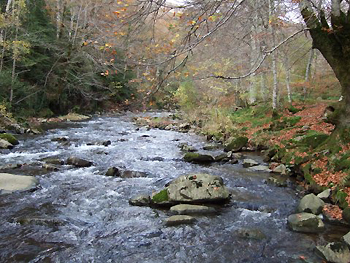
Finally, some people find they need to leave the city during fiesta, just for some rest, or some sanity, while others begin their fiesta with some pre-party preparations or end it with some post-party rest and recuperation. And I suppose if you want find the high life, what better way than to take the high road. I’ll leave this month’s article with something from A.E Hotchner’s book, “Papa Hemingway.” Take yourselves back to Navarra in the fifties…
“Just to the northeast of Pamplona are the Irati river and its forests, which were such an integral part of The Sun Also Rises. Ernest was afraid that they had been completely ruined, but his fears proved unfounded. For four afternoons we picnicked at various places along the river, going higher and higher up the mountain, leaving at noon, getting back just in time for the bullfight. We travelled in three cars, each car responsible for part of the picnic.
The wine was kept cold in the clear Irati water, and each day we swam up the river, which flowed through a gorge between the high-rising walls of the beech-covered mountain. It was miraculous to leave the wild tumult of the feria and a half hour later to be in the midst of this primitive, quiet beauty.
One day after lunch Ernest and I sat on the pebbly bank, contemplating the view, which consisted of circling hawks, rising mountains, and the seven women of our cuadrilla who were napping at various levels on warm rock ledges above the opposite bank. “Nymphs on shelves in nature’s store,” Ernest said. “What a hell of a happy time.” He watched a hawk plummet earthward and disappear, then re-emerge beating sky-ward with a small prey struggling between his talons. “You know, Hotch,” he said, his eyes on the hawk, “it’s better than The Sun Also Rises.”
****** ****** ****** ****** ****** ******
And so, finally, it’s video time. This one has been doing the rounds lately so many of you may have seen it, this version is actually two videos cobbled together, but for those who haven’t, just watch how stupid some people can be. I don’t mean by participating in bull runs and such like, but the way in which some of them behave while in the street, or where they stand. It’s from the Azores . Check the woman out at 2m 50 secs…not the worst by any means…but just how dumb can you get?! Be warned, it’s brutal in parts. Hasta la proxima!

